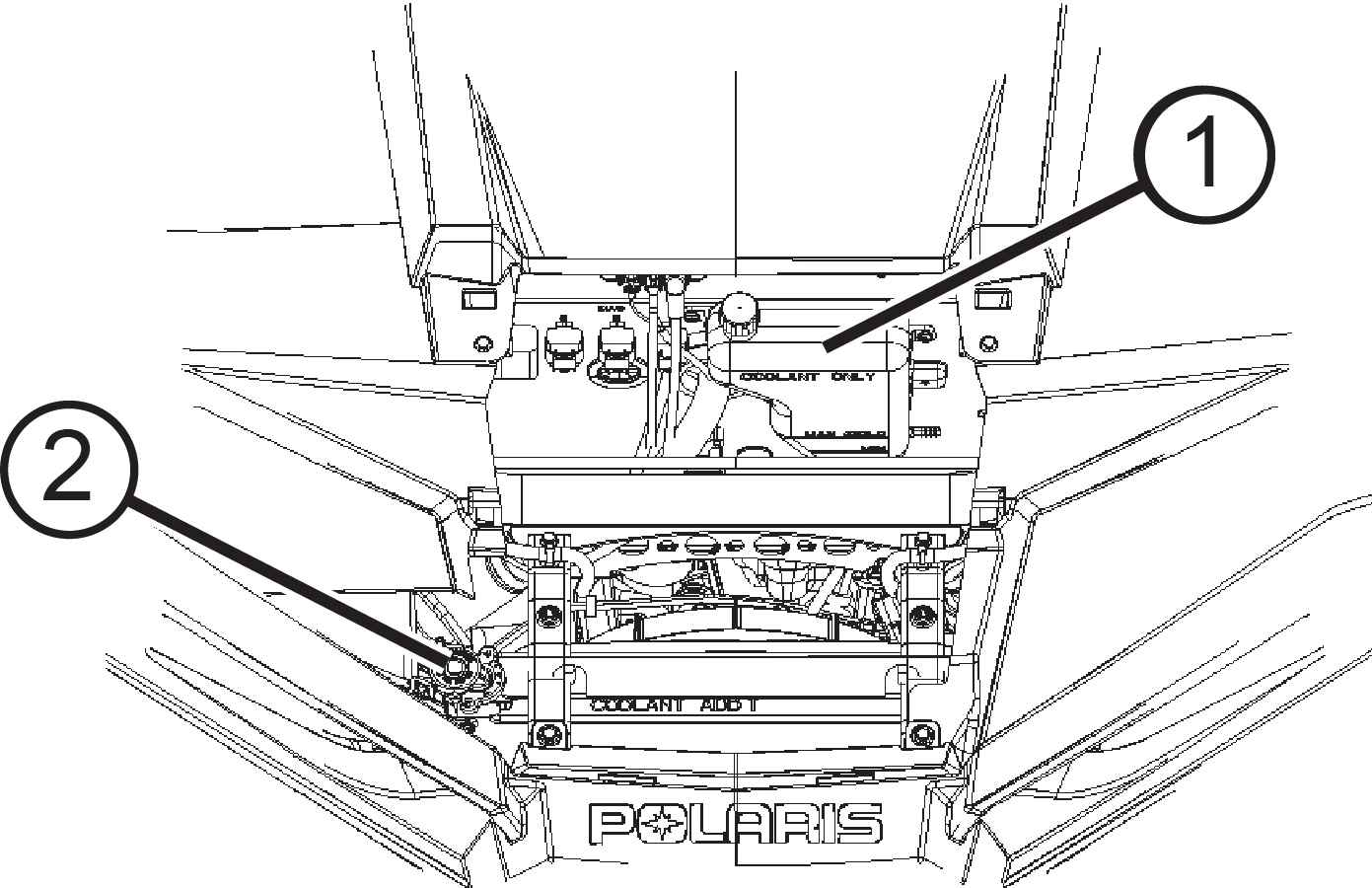The engine coolant level is maintained by the recovery system. The recovery system components are the overflow bottle, radiator
vent fitting, radiator pressure cap and connecting hose.
As coolant operating temperature increases, the expanding (heated) excess coolant is forced out of the radiator, past the
pressure cap, and into the overflow bottle. As engine coolant temperature decreases, the contracting (cooled) coolant is drawn
back up from the tank, past the pressure cap, and into the radiator.
| TIP |
| Some coolant level drop on new vehicles is normal as the system is purging itself of trapped air. Observe coolant levels and
maintain as recommended by adding coolant to the overflow bottle. |
Adding or Changing Coolant
POLARIS recommends the use of POLARIS Antifreeze 50/50 Premix. This antifreeze is already premixed and ready to use. Do not
dilute with water. See the Polaris Products section for the part numbers.
To ensure that the coolant maintains its ability to protect the engine, we recommend that the system be completely drained
every five (5) years and fresh Antifreeze 50/50 Premix added.
Any time the cooling system has been drained for maintenance or repair, replace the coolant with fresh Antifreeze 50/50 Premix.

